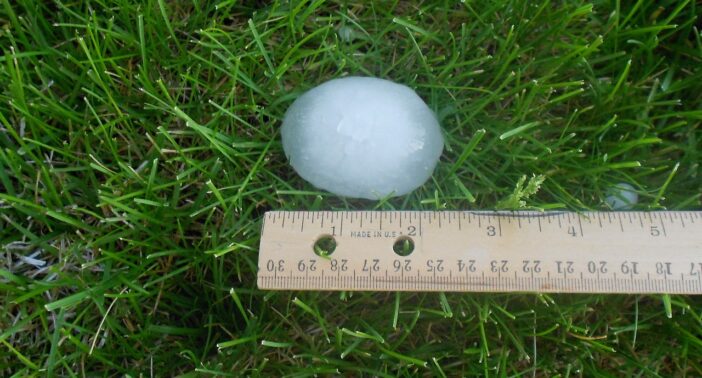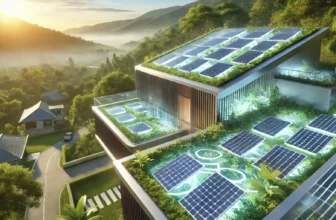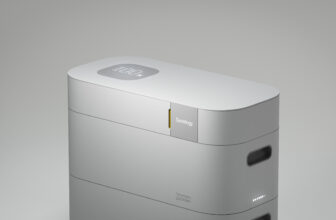As you know, I am a big fan of photovoltaics. It allows you to produce your own electricity, save money, and even contribute to the energy transition. But there is a sneaky enemy that is watching these precious installations: hail. A subject that comes up every year with the famous March showers… These small pieces of ice falling from the sky can cause considerable damage to photovoltaic panels and turn a juicy investment into a costly headache. Fortunately, there are solutions to protect your installation and avoid seeing your efforts reduced to crumbs (literally).
Why is hail a problem for solar panels?
You might think that solar panels are indestructible. After all, they are designed to withstand extreme weather conditions. And they are very strong. However, when a hailstorm unleashes balls of ice several centimeters in diameter, the risk of breakage becomes very real.
Although most solar panels are tested and certified to withstand hailstones up to 25 mm in diameter at speeds of 83 km/h, some storms far exceed these standards. In June 2022, for example, a hailstorm in France caused damage to many solar installations, with hailstones sometimes reaching the size of tennis balls!

Once the panels are cracked or broken, their efficiency drops drastically, and they often need to be replaced. A real nightmare for any homeowner concerned about making the most of their investment.
Solutions to protect your solar panels
So, how can you avoid seeing your installation go up in smoke (or rather in shards of glass)? Here are some effective solutions to minimize the risks.
Choose ultra-resistant solar panels
If you live in an area prone to violent storms, the choice of panels is essential. Some models are designed with thicker tempered glass, which gives them better impact resistance.
Before buying, check the certifications. The IEC 61215 standard, for example, requires manufacturers to test panels with 25 mm hailstones sent at high speed. But some brands go beyond this standard with models capable of withstanding 35 mm hailstones or more.
If you already have an installation in place, there are still solutions to reinforce the protection without changing everything.
Install a protective net
A hail net is not necessarily the first thing that comes to mind, but it is an effective option to intercept hail before it causes damage. These nets are often used in agriculture to protect orchards and sensitive crops, and it is entirely possible to adapt them to a solar installation.
The idea is simple: attach a net above the panels, a few centimeters apart, so that it absorbs the impact of hailstones. Be careful, however, to use a net that does not block the passage of light, otherwise you risk reducing electricity production.
Opt for a protective coating
Some companies offer transparent protective films that stick directly to the surface of the solar panels. These films, often made of polyurethane, act as a shield by absorbing shocks while letting light through.
This is a discreet and easy-to-install solution, but you must make sure to choose a high-quality film that will not yellow over time and reduce the efficiency of your panels.
Think about the tilt of the panels
The angle at which photovoltaic panels are installed also plays a role in their resistance to hail. The more a panel is tilted, the more hailstones will tend to slide over the surface instead of hitting it directly.
In regions exposed to severe storms, it may be worth installing the panels with a more pronounced tilt. This not only improves protection against hail, but also the flow of water in the event of heavy rain.
Monitor the weather and anticipate
We can't prevent hail from falling, but we can at least prepare. Weather forecasts are becoming more and more accurate and often make it possible to anticipate violent storms.
If a hailstorm is forecast, you have several options:
– If your panels are mounted on a tilting support, you can temporarily change their angle to reduce the impact.
– For mobile installations (such as the solar stations that we have already talked about a lot), it may be possible to temporarily store them under cover.
Anticipating is the key to avoiding unpleasant surprises!
Insurance: your last line of defense
Despite all these precautions, it is impossible to guarantee absolute protection against the vagaries of the weather. This is why it is essential to check that your installation is properly covered by insurance.
Most home insurance policies cover damage related to bad weather, but it is wise to read the fine print and make sure that your solar panels are included in the coverage.
If this is not the case, there is specific insurance for photovoltaic installations, covering damage caused by hail, lightning or even strong winds. A good plan to avoid a bad financial surprise.
Protect your solar panels, an essential reflex
Solar panels are a long-term investment, and it would be a shame if a hailstorm compromised everything. Fortunately, by taking a few simple precautions – choosing resistant panels, protective nets, anti-impact films, suitable inclination and following the weather forecast – you can greatly limit the risks.
Not to mention insurance, which can be your best ally in the event of an unforeseen event!
So, it is best not to leave the fate of your solar installation to chance. After all, seeing your panels produce clean and free energy is much more satisfying than having to replace them after a storm!






Please remain courteous: a hello and a thank you cost nothing! We're here to exchange ideas in a constructive way. Trolls will be deleted.